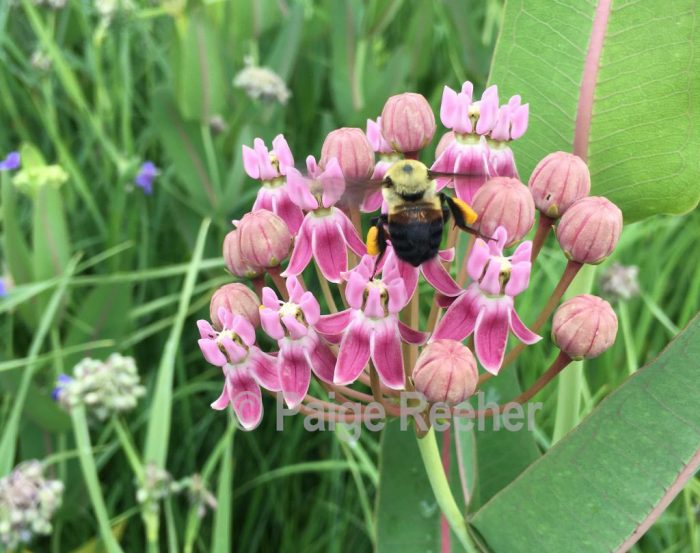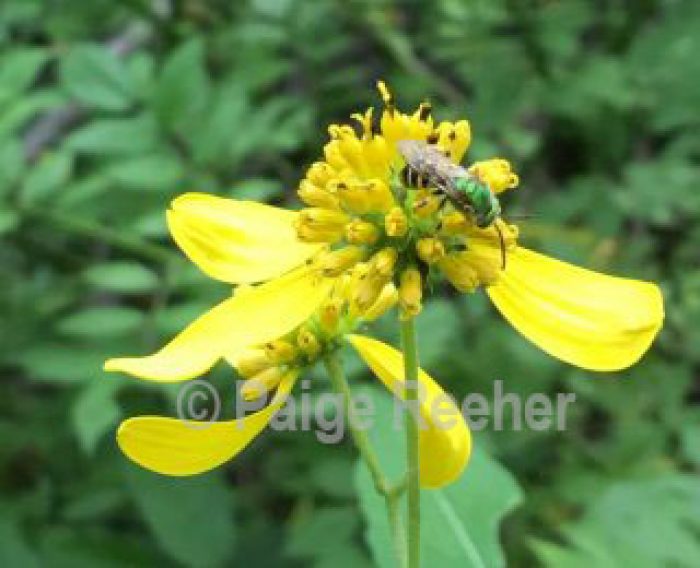Declining Pollinator Populations? Here’s How You Can Help

The decline in bee and pollinator populations worldwide has
recently become common knowledge1,2. Government agencies, non-profit
organizations, and companies worldwide have been working to create legislation,
conservation efforts, and incorporate better practices to benefit the world’s
pollinators and in hopes of increasing populations.
But what can the average homeowner or citizen do?
For most people, the immediate thought is to start keeping
bees, i.e., honeybees. Although this is a good idea if you’re interested in collecting
honey and are willing to put in the effort required to maintain and sustain
thousands of bees, it is not the only option. Starting new hives in an area
without adding floral resources can hinder the established populations of
neighboring honeybees and native bees.
Instead, the best things a homeowner or small group of
individuals can do is welcome the bees to your lawn by providing the resources
they need and reduce, if not eliminate, your use of pesticides, herbicides, and
fungicides.

But how do you “welcome bees and pollinators” to your yard?
By providing one or multiple of the resources they require: foraging and
nesting habitat.
All bees and pollinators require foraging habitat (flowers)
as they are dependent upon the protein and carbohydrates provided by flower pollen
and nectar respectively3. Increasing the number of flowering
resources on your property makes them available for bees and other pollinators.
Some bees and pollinators have unique relationships with specific genera of
plants, making them dependent on those flowers to reproduce (producing an
obligate relationship).
A well-known example of this type of obligate relationship is
the Monarch butterfly, whose offspring are dependent upon plants within the
Milkweed (Asclepias) genus3. An example of an obligate bee
that we have here in Ohio is the Squash Bee (Peponapis pruinose); these
bees are dependent primarily upon plants within the squash families4.
Another way that you can help provide habitat for native bees
and other pollinators is by providing nesting habitat. Native bees are diverse
in their nesting habitat. Some like to make nests in old rodent dens or under
last year’s leaf/grass litter (e.g., Bumble Bees, Bombus sp.). Other’s
excavate tunnels into bare soils (e.g., Mining Bees, Andrena sp.); bore into
the soft pith of broken or pruned raspberry, lilac, and rose canes/twigs (e.g.,
Small Carpenter Bees, Ceratina sp.); or bore in decaying pieces of
downed wood (e.g., Sweat Bees, Augochlora sp.). Others build nests out
of mud (e.g., Mason Bees, Osmia sp.) or pieces of leaves/petals (e.g., Leaf
Cutter Bees, Megachile sp.) in existing cavities4.
By providing one or both of the resources mentioned above, you can help provide needed support for the native bees in your community. On the next beautiful day, take a walk through your neighborhood and see what resources are available on your block and surrounding areas. If it looks like floral resources are lacking, plant some; plant any flowering tree, shrub, or flower and remember that bees need flowers from spring through fall. If it looks like everyone has “neat and tidy” yards, perhaps stack the pruned rose twigs in the back yard, still allowing for cavity nesters to access the resource. Or let the one bare patch you can’t seem to get anything to grow on stay empty, maybe a group of miner bees will move in.
These simple actions and decisions can have a significant impact on your local bee community. By planting flowers or providing nesting habitat, you can become part of the solution to help protect and conserve bee and pollinator populations around the world.
1 Kluser S, Peduzzi P (2007) Global pollinator decline: a literature review. UNEP/GRID Europe
3 Morse S (2020) “Wings of Life” USFWS Website Feature.
4 Eaton ER (2016) “Common Bees and Wasps of Ohio Field Guide” ODNR Publication.
Additional Information:
Xerces Society Website (Invertebrate Conservation Organization)
Pollinator Partnership Website
The Ohio State University Bee Lab Website